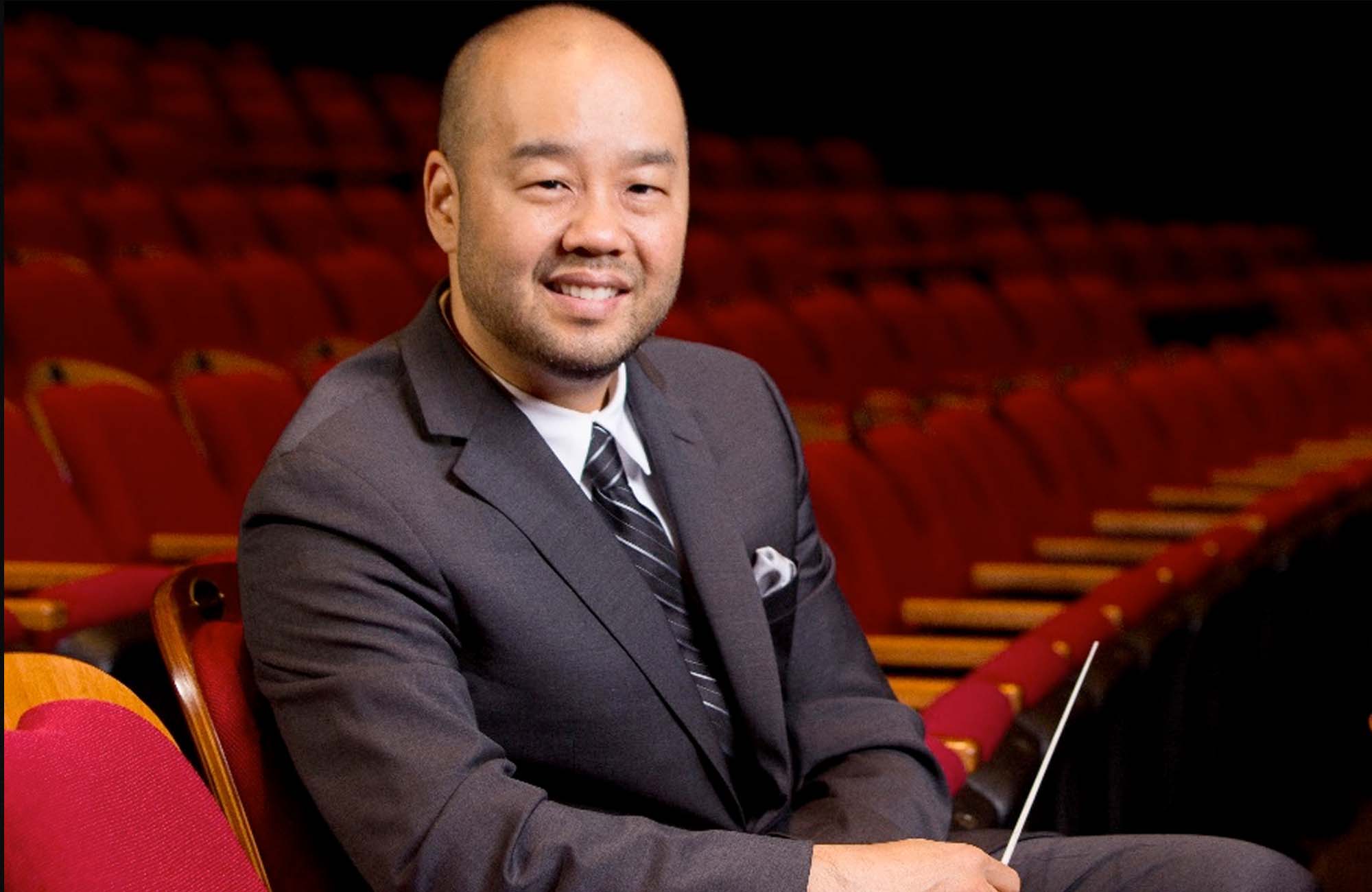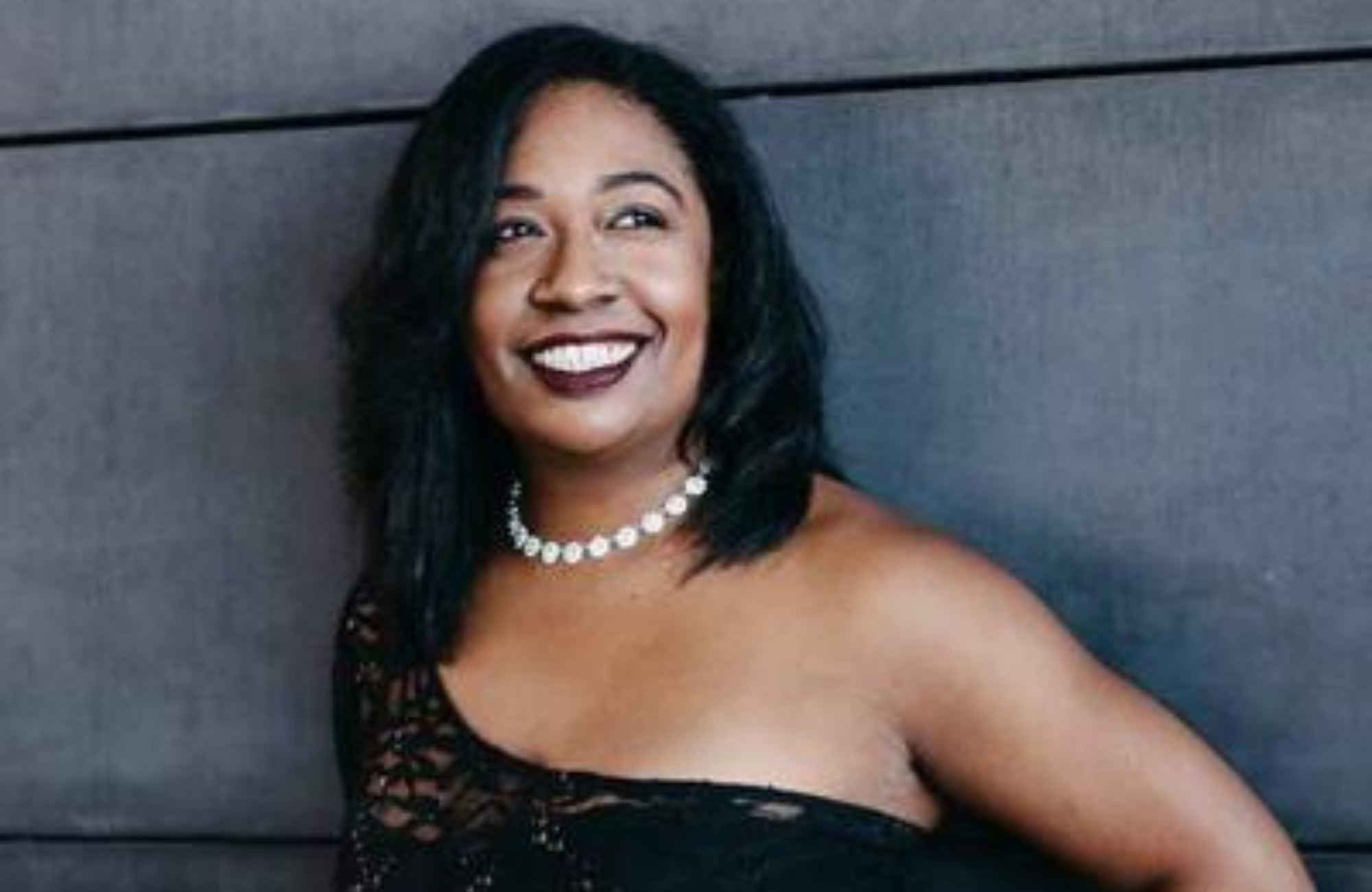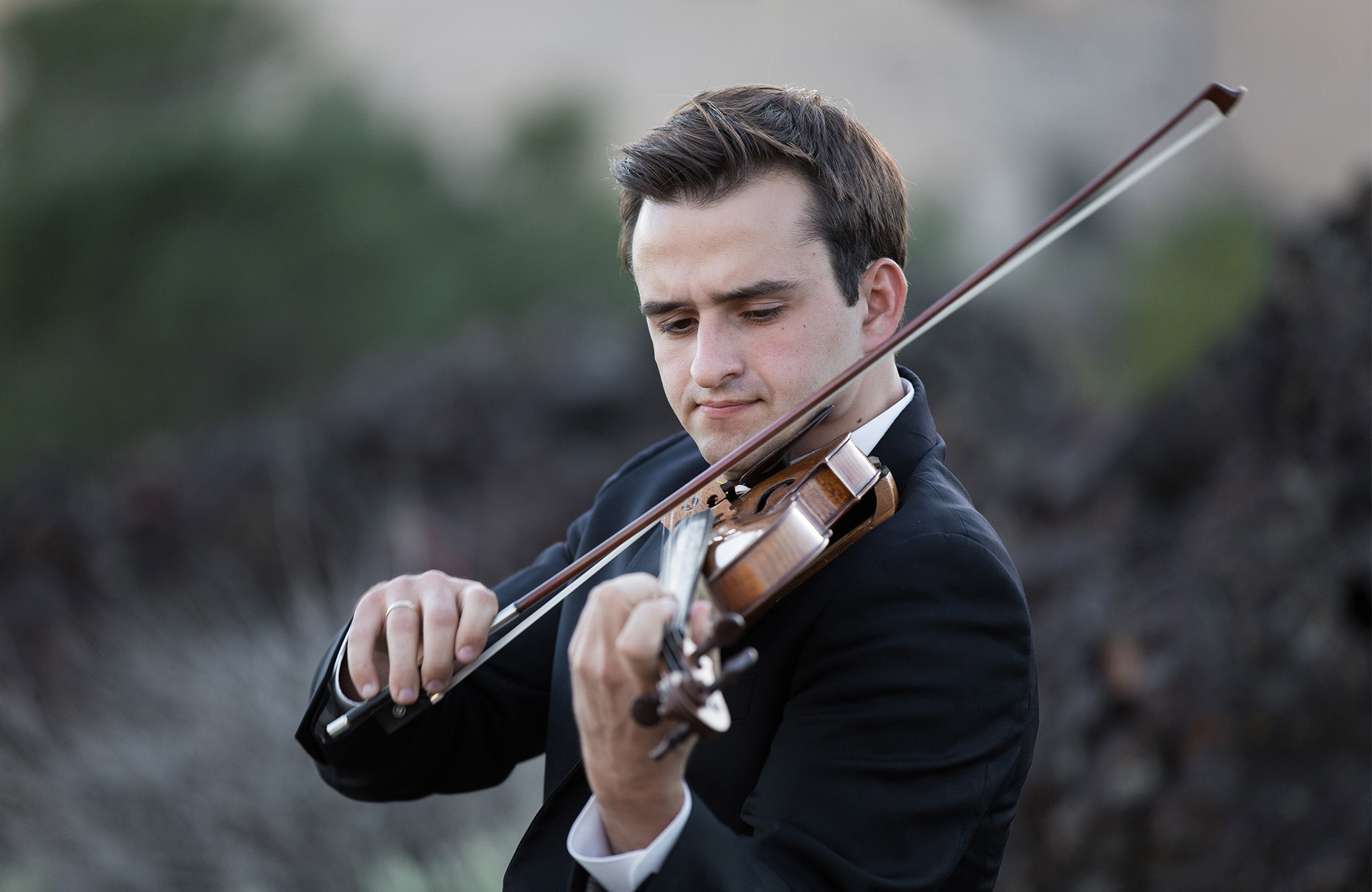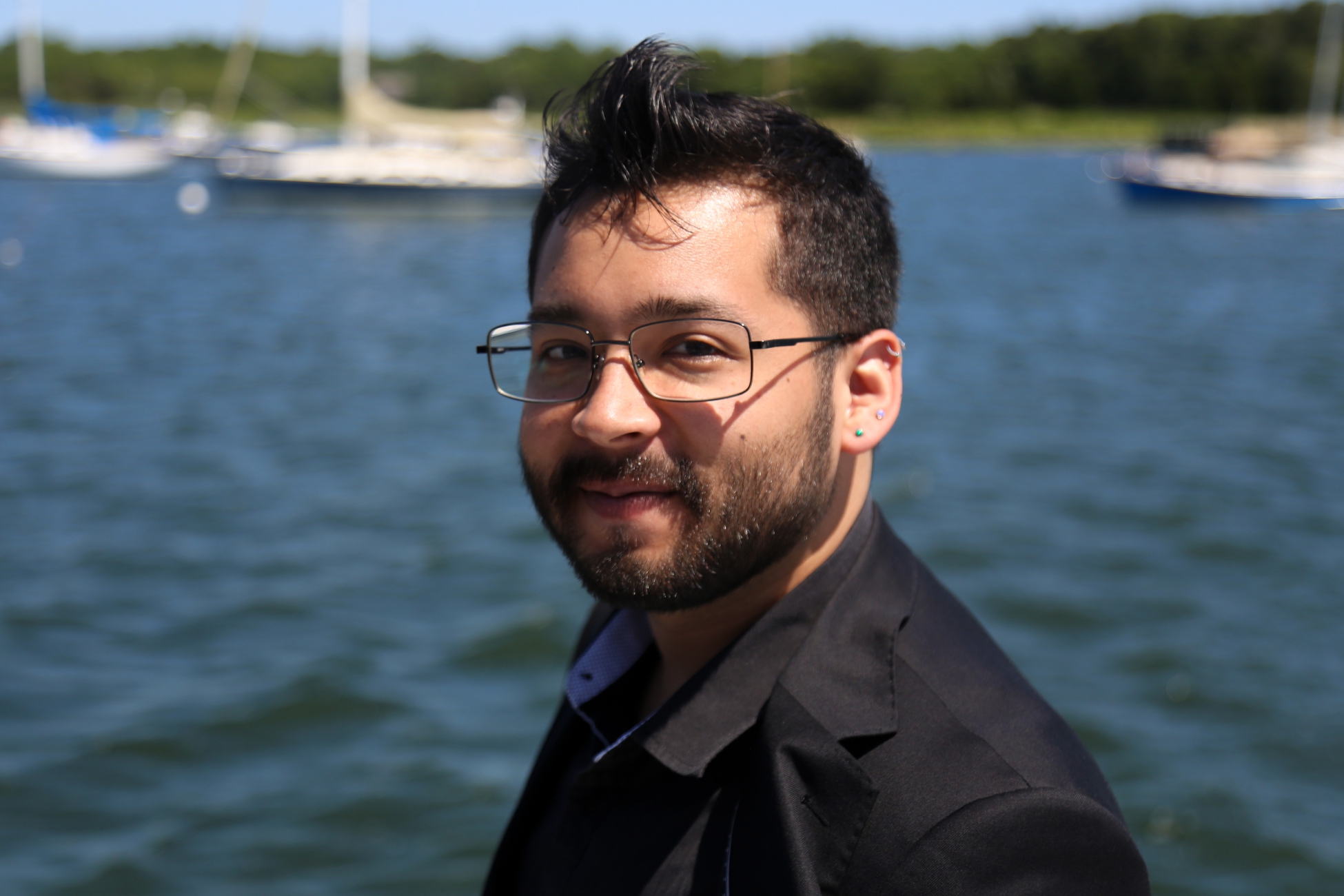A spectacular season opener begins featuring the The Syracuse Orchestra wind section in The Lovely Sirens, written by Stacy Garrop in 2010. Michelle Cann returns to the stage to play Beethoven’s fifth and final piano concerto, “The Emperor”, and the concert closes with the popular Tchaikovsky’s Symphony No. 4, which he dedicated to his best friend.
PROGRAM
SMITH: Star Spangled Banner ![]()
GARROP: The Lovely Sirens
BEETHOVEN: Concerto, Piano, No.5, op.73, E-flat major (Emperor) ![]()
TCHAIKOVSKY: Symphony No. 4 ![]()
FEATURED ARTISTS

Described as bringing an “artisan storyteller’s sensitivity… shaping passages with clarity and power via beautifully sculpted dynamics… revealing orchestral character not seen or heard before” (Arts Knoxville) Lawrence Loh enjoys a dynamic career as a conductor of orchestras all over the world.
After an extensive two ...
Described as bringing an “artisan storyteller’s sensitivity… shaping passages with clarity and power via beautifully sculpted dynamics… revealing orchestral character not seen or heard before” (Arts Knoxville) Lawrence Loh enjoys a dynamic career as a conductor of orchestras all over the world.
After an extensive two year search, Lawrence Loh was recently named Music Director of the Waco Symphony Orchestra beginning in the Spring of 2024. Since 2015, he has served as Music Director of The Syracuse Orchestra (formerly called Symphoria), the successor to the Syracuse Symphony Orchestra. “The connection between the organization and its audience is one of the qualities that’s come to define Syracuse’s symphony as it wraps up its 10th season, a milestone that might have seemed impossible at the beginning,” (Syracuse.com) The Syracuse Orchestra and Lawrence Loh show that it is possible to create a “new, more sustainable artistic institution from the ground up.”
Appointed Assistant Conductor of the Pittsburgh Symphony in 2005, Mr Loh was quickly promoted to Associate and Resident Conductor within the first three years of working with the PSO. Always a favorite among Pittsburgh audiences, Loh returns frequently to his adopted city to conduct the PSO in a variety of concerts. Mr. Loh previously served as Music Director of the West Virginia Symphony Orchestra, Music Director of the Northeastern Pennsylvania Philharmonic, Artistic Director and Principal Conductor of the Syracuse Opera, Music Director of the Pittsburgh Youth Symphony Orchestra, Associate Conductor of the Dallas Symphony Orchestra, Associate Conductor of the Colorado Symphony Orchestra and Music Director of the Denver Young Artists Orchestra.
Mr. Loh’s recent guest conducting engagements include the San Francisco Symphony, Dallas Symphony, North Carolina Symphony, Baltimore Symphony, Sarasota Orchestra, Florida Orchestra, Pensacola Symphony, Atlanta Symphony, National Symphony, Detroit Symphony, San Diego Symphony, Seattle Symphony, National Symphony (D.C.), Utah Symphony, Rochester Philharmonic, Indianapolis Symphony, Calgary Philharmonic, Buffalo Philharmonic, Albany Symphony and the Cathedral Choral Society at the Washington National Cathedral. His summer appearances include the festivals of Grant Park, Boston University Tanglewood Institute, Tanglewood with the Boston Pops, Chautauqua, Sun Valley, Shippensburg, Bravo Vail Valley, the Kinhaven Music School and the Performing Arts Institute (PA).
As a self-described “Star Wars geek” and film music enthusiast, Loh has conducted numerous sold-out John Williams and film music tribute concerts. Part of his appeal is his ability to serve as both host and conductor. “It is his enthusiasm for Williams’ music and the films for which it was written that is Loh’s great strength in this program. A fan’s enthusiasm drives his performances in broad strokes and details and fills his speaking to the audience with irresistible appeal. He used no cue cards. One felt he could speak at filibuster length on Williams’ music.” (Pittsburgh Tribune)
Mr Loh has assisted John Williams on multiple occasions and has worked with a wide range of pops artists from Chris Botti and Ann Hampton Callaway to Jason Alexander and Idina Menzel. As one of the most requested conductors for conducting Films in Concert, Loh has led Black Panther, Star Wars (Episodes 4-6), Jaws, Nightmare Before Christmas, Jurassic Park, Casablanca, The Wizard of Oz and Singin’ in the Rain, among other film productions.
Lawrence Loh received his Artist Diploma in Orchestral Conducting from Yale, his Masters in Choral Conducting from Indiana University and his Bachelor of Arts from the University of Rochester. Lawrence Loh was born in southern California of Korean parentage and raised in Carlisle, Pennsylvania. He and his wife Jennifer have a son, Charlie, and a daughter, Hilary. Follow him on instagram @conductorlarryloh or Facebook at @lawrencelohconductor or visit his website, www.lawrenceloh.com

Lauded as “exquisite” by The Philadelphia Inquirer and “a pianist of sterling artistry” by Gramophone, Michelle Cann has become one of the most sought-after pianists of her generation. She made her debut with The Philadelphia Orchestra in 2021 and has recently performed concertos with The Cleveland ...
Lauded as “exquisite” by The Philadelphia Inquirer and “a pianist of sterling artistry” by Gramophone, Michelle Cann has become one of the most sought-after pianists of her generation. She made her debut with The Philadelphia Orchestra in 2021 and has recently performed concertos with The Cleveland Orchestra, the National Symphony Orchestra, the Orquestra Sinfônica Municipal de São Paulo, the Los Angeles Philharmonic, and the symphony orchestras of Atlanta, Baltimore, and Cincinnati.
Highlights of Cann’s 2023-24 season include appearances with the Charlotte, Hawaii, Indianapolis, Québec, Sarasota, and Winnipeg symphony orchestras, and recitals in New York City, Portland, Berkeley, Beverly Hills, and Denver. She also has teaching and performance residencies at the University of Indiana South Bend and Meany Center for the Performing Arts at the University of Washington.
Recognized as a leading interpreter of the piano music of Florence Price, Cann performed the New York City premiere of Price’s Piano Concerto in One Movement with The Dream Unfinished Orchestra in July 2016 and the Philadelphia premiere with The Philadelphia Orchestra and Music Director Yannick Nézet-Séguin in February 2021. Her recording of the concerto with the New York Youth Symphony won a Grammy Award in2023 for Best Orchestral Performance. Her acclaimed debut solo album Revival, featuring music by Price and Margaret Bonds, was released in May 2023 on the Curtis Studio label. She has also recorded two Price piano quintets with the Catalyst Quartet.
Cann was the recipient of the 2022 Sphinx Medal of Excellence, the highest honor bestowed by the Sphinx Organization. She also received the Cleveland Institute of Music’s 2022 Alumni Achievement Award and the 2022 Andrew Wolf Chamber Music Award.
A celebrated chamber musician, Cann has collaborated with leading artists including the Catalyst, Dover, and Juilliard string quartets, violinists Timothy and Nikki Chooi, and cellist Thomas Mesa. She has appeared as co-host and collaborative pianist with NPR’s From The Top, collaborating with actor/conductor Damon Gupton, violinist Leila Josefowicz, and violinist and MacArthur Fellow Vijay Gupta. Cann’s numerous media appearances include PBS Great Performances’ Now Hear This hosted by Scott Yoo and Living the Classical Life with host Zsolt Bognár.
Embracing a dual role as performer and pedagogue, Cann is frequently invited to teach master classes, give lecture-demonstrations, and lead teaching residencies. Recent residencies include the Gilmore International Keyboard Festival and the National Conference of the Music Teachers National Association. She has recorded lessons for tonebase, the popular piano lesson platform. She has also served on the juries of the Cleveland International Piano Competition, the Kauffman Music Center International Youth Piano Competition, and the piano competition of the Music Academy of the West.
A staunch believer in community-building through music, Cann has served as the director of two children’s choruses in the El Sistema-inspired program Play On Philly and was part of the inaugural class of ArtistYear fellows at the Curtis Institute of Music. Through ArtistYear, she worked with community partners City Year, Teach for America, and AmeriCorps to provide arts education and access to underserved communities in Philadelphia.
Cann holds bachelor’s and master’s degrees in piano performance from the Cleveland Institute of Music, where she studied with Paul Schenly and Dr. Daniel Shapiro, and an Artist’s Diploma from the Curtis Institute of Music, where she studied with Robert McDonald. She joined the Curtis piano faculty in 2020 as the inaugural Eleanor Sokoloff Chair in Piano Studies. She joined the piano faculty of the Manhattan School of Music in 2023.
Follow Michelle Cann on Instagram: @michelleacann





